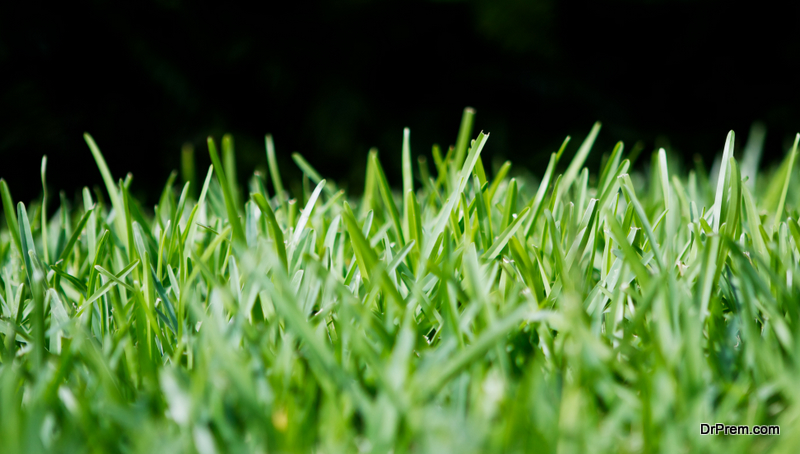St. Augustine is a beautiful grass popular in the Southern US, as it is not very cold tolerant. It does change color in the fall and takes a while to return to its full green hue in spring but looks amazing in the warm summer months.
The problem with St. Augustine grass is it can be expensive to start from scratch. The most expensive, though the easiest, route would be to install full pallets of St. Augustine sod onto your yard. Not every home gardener can afford to go with this method, so they decide to seed their yard themselves. Only there is one problem – St. Augustine grass seed is not available!
This warm weather turf grass doesn’t produce enough viable seed for commercial sale, so you will not be able to find it in your local hardware store. This leaves you with two options, sod or plugs.
What is a grass plug?
A grass plug is a small portion of turf grass grown in several portions, often sold in trays. You can purchase different sized of plugs ranging from 1.5 to 3 inches in length. Once planted, the roots will spread out over time, filling in empty areas.
Another money saving option would be to make your own plugs yourself. You can cut pieces of sod down to the appropriate size or you can take portions of grass from an inconspicuous part of your yard.
When to use a grass plug?
Grass plugs can be used for many different reasons, including:
- When your desired grass type is not available in seeds, such as St. Augustine.
- The area you wish to plant is too far for delivery of sod pallets.
- Your yard is too large for the amount of sod needed to fully cover the area.
- Existing yard has holes that need to be filled.
Installing The Grass Plugs
St. Augustine grass needs to be planted at least 90 days before the first frost of the coming winter season. For best results, you will want to plant your plugs in the ground around early summer, or even as early as late spring. This gives the plugs the longest time to expand their roots and secure deeply into the soil.
- First, use a tool to till the first 6 inches of soil.
- Water the area until damp, making sure not to drench the area with too much sitting water.
- Dig hole for grass plugs to sit in. Leave at least 6 inches of space between each plug. This gives optimal room for root growth and nutrient intake for each plug.
- Place fertilizer within the hole, giving the plant an extra boost as it begins to incorporate into the soil.
- Place plug into hole and fill with dirt around the sides. Be careful not to bury dirt on top of the plug. This can increase bacteria and fungus growth on the grass.
- Water one more time once plant is all settled.
Caring For Your Plugs After Planting
Water your plugs every 2-3 days, keeping an eye for any fungus growth on the plant. Quickly remove any weeds that grow near your plug, as they can suck up nutrients from the soil and your grass. Avoid using any herbicides for the first several weeks of their life as it can seriously damage the plant.
Your new plugs need fertilizer to grow quickly and cover up empty patches, so be sure to fertilize your grass once a month with a fertilizer designed for St Augustine grass. There are even fertilizers specially suited for grass, though a generic fertilizer can do the trick too.
Do not mow your grass plugs right away! They are growing crucial root systems in their first few weeks of life and a lawn mower can easily rip them out of the ground. After a month, you can begin mowing them to the same height as your remaining yard.
And there you have it! Your grass plugs have been established and should continue thriving as long as all other environmental factors are met. The process may seem labor intensive and complicated at first, but with simple planning you can have the yard of your dreams.
St. Augustine grass is a staple in the Southern US and it is easy to see why. Its hardy temperament in the warm weather makes it ideal for the sweltering heat that close to the equator. Give it one summer of care and maintenance, and your yard will be luscious and green!
Article Submitted By Community Writer


